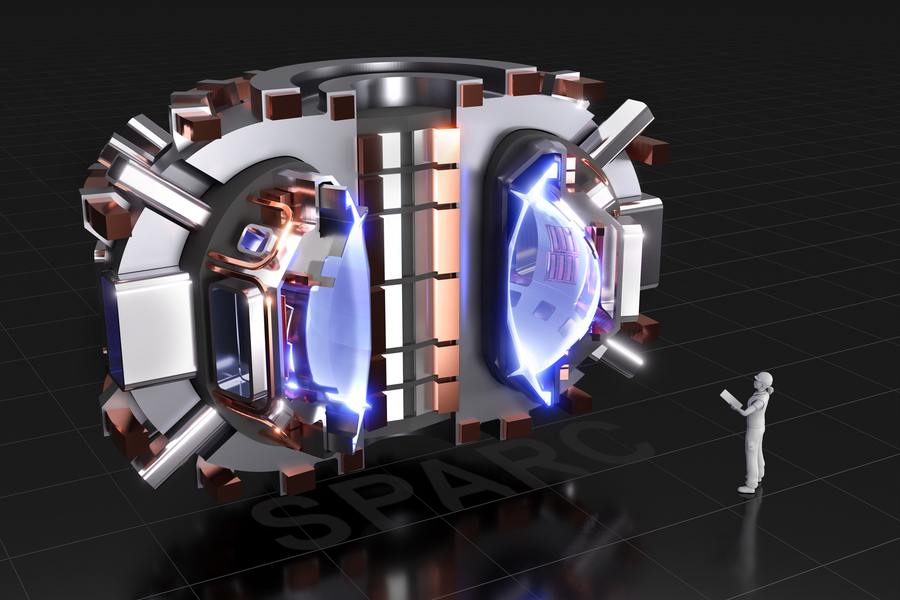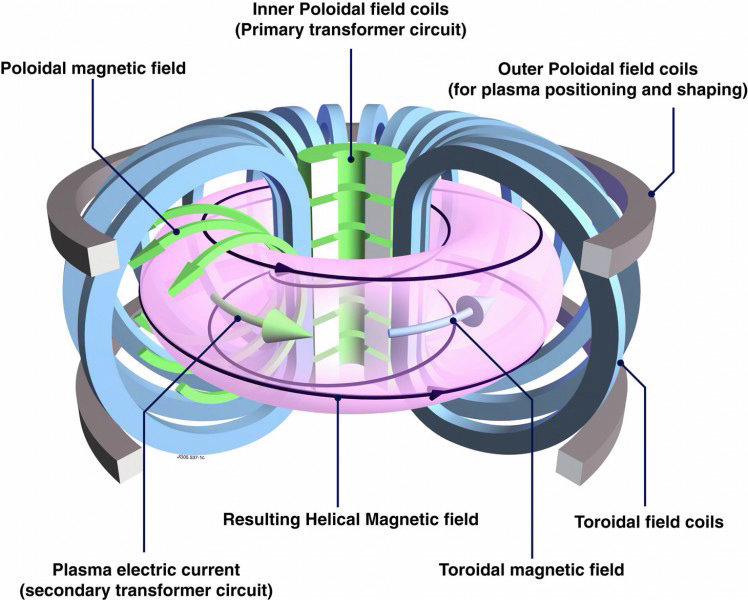Two and a half years ago, MIT signed an agreement with a startup company to develop a precursor to a practical, emissions-free power plant. Normally, that wouldn’t draw too much attention — but that power plant is not solar nor wind, it’s something entirely different: a fusion reactor.
Producing nuclear fusion has been a dream of physicists for decades, but many didn’t even think it was possible. Now, a total of seven papers penned by 47 researchers at 12 institutions argue that not only is it possible, it’s feasible with today’s technology.
Simply put, reserchers see no real obstacle in the face of a functional fusion reactor.

Several teams are working on fusion reactors using different types of technologies to produce fusion reactors. The MIT-led team is developing a “SPARC” compact fusion reactor. This is essentially a “burning plasma” reactor that fuses hydrogen isotopes to form helium, without requiring any input of energy or other matter. It’s one of the largest private projects in the field.
Nuclear fusion is a common process in the universe, but it’s hard to replicate on Earth. In fusion, two or more atomic nuclei combine to form one or more different atomic nuclei. The process releases tremendous energy — it’s what powers the Sun and all other stars, as hydrogen atoms fuse to form helium. But stars have tremendous mass and temperatures that facilitate the process, whereas here on Earth, we need to do it in a controlled and safe fashion.
If researchers can pull it off, this could one day become a safe and clean way of producing energy. But after over a century of research, it’s still a work in progress.
It’s not like the field hasn’t advanced. The first large-scale reactors (such as the gigantic ITER in France) are already under construction, but aside from many other challenges, the large-scale reactors such as ITER are, well, large. This makes construction very difficult and expensive.
Thanks to progress in the field of superconducting magnets, the researchers working with SPARC are opting for a different approach: smaller, but efficient reactors. SPARC is essentially a tokamak — a type of confinement device in the shape of a torus. The superconducting magnets are key because they will be used to contain the extremely large temperatures and pressures inside the reactors, which has consistently been one of the largest challenges around nuclear fusion.
Not a single brick has been laid at SPARC yet, but in the seven recently published papers, researchers provide detailed calculations on how SPARC will work. According to the team, with existing technology, SPARC could produce two times the energy needed to generate the reaction. This is a huge deal since no other reactor has even managed to break even. In fact, SPARC researchers say the reactor could produce up to 10 times more energy, but there’s still some work needed for that.
“What we’re trying to do is put the project on the firmest possible physics basis, so that we’re confident about how it’s going to perform, and then to provide guidance and answer questions for the engineering design as it proceeds,” Greenwald said in an official statement.

It’s a compelling approach that could be a game-changer for the international fusion program, if confirmed. The authors used cutting-edge simulations they ran on powerful supercomputers to back their case up, and so far, no major roadblocks have been uncovered. The initial design has been tweaked a bit (for instance, the diameter of the tokamak has been increased by 12%), but aside from minor corrections, researchers find no reason why it shouldn’t work.
“We haven’t run into anything where we say, ‘oh, this is predicting that we won’t get to where we wan,” notes Greenwald. In short, he says, “one of the conclusions is that things are still looking on-track. We believe it’s going to work.”
“There’s always the question of a little more of this, a little less of that, and there’s lots of things that weigh into that, engineering issues, mechanical stresses, thermal stresses, and there’s also the physics — how do you affect the performance of the machine?”
The fact that the seven papers have been peer-reviewed without major objection seems to indicate that the scientific world is not opposed to the plan.
“The analysis presented in these papers will provide the world-wide fusion community with an opportunity to better understand the physics basis of the SPARC device and gauge for itself the remaining challenges that need to be resolved,” says George Tynan, professor of mechanical and aerospace engineering at the University of California at San Diego, who was not connected to this work. “Their publication marks an important milestone on the road to the study of burning plasmas and the first demonstration of net energy production from controlled fusion, and I applaud the authors for putting this work out for all to see.”
So what’s next? Well, actually building the thing. There are still many unknowns about the physics of burning plasma, but there seems to be enough theory to support construction.
Since SPARC is not as large and complex as other fusion reactors, construction shouldn’t take that long. “We’re still aiming for a start of construction in roughly June of ’21,” Greenwald says.
SPARC will be thoroughly tested and analyzed. If everything goes according to plan, it should be completed over the next 3-4 years, but it won’t start generating energy up until 2035, the team notes.


